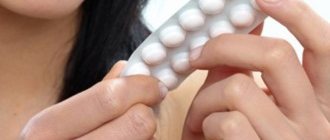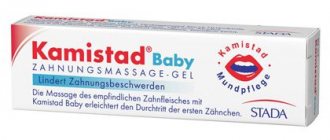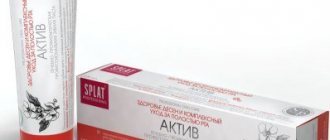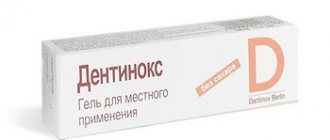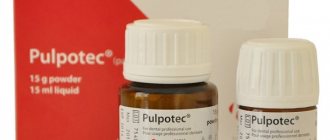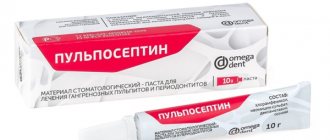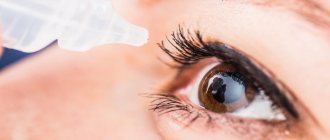Acyclovir
Acyclovir tablets can be taken with meals, since food intake does not significantly interfere with its absorption. The tablets should be taken with a full glass of water.
Adults
Treatment of infections caused by herpes simplex virus
For the treatment of infections caused by the herpes simplex virus, the recommended dose of Acyclovir is 200 mg 5 times a day (every 4 hours, except during night sleep). Usually the course of treatment is 5 days, but can be extended for severe primary infections.
In case of severe immunodeficiency (for example, after bone marrow transplantation) or in case of impaired absorption from the intestine, the oral dose of Acyclovir can be increased to 400 mg. As an alternative, the possibility of using acyclovir in a lyophilisate dosage form for the preparation of a solution for infusion may be considered.
Treatment should begin as soon as possible after infection occurs; in case of relapses, it is recommended to prescribe the drug already in the prodromal period or when the first elements of the rash appear.
Prevention of recurrent infections caused by the herpes simplex virus in patients with normal immune status
To prevent relapses of infections caused by the herpes simplex virus in patients with normal immune status, the recommended dose of Acyclovir is 200 mg 4 times a day (every 6 hours).
For many patients, a more convenient treatment regimen is suitable: 400 mg 2 times a day (every 12 hours).
Sometimes lower doses of Acyclovir are effective: 200 mg 3 times a day (every 8 hours) or 200 mg 2 times a day (every 12 hours).
Some patients may experience exacerbation of infection when taking a total daily dose of 800 mg.
Treatment with Acyclovir should be periodically interrupted for 6-12 months to identify possible changes in the course of the disease.
Prevention of infections caused by herpes simplex virus in patients with immunodeficiency
For the prevention of infections caused by the herpes simplex virus in patients with immunodeficiency, the recommended dose of Acyclovir is 200 mg 4 times a day (every 6 hours). In case of severe immunodeficiency (for example, after bone marrow transplantation) or in case of impaired absorption from the intestine, the oral dose of Acyclovir can be increased to 400 mg 4 times a day. As an alternative, the possibility of using acyclovir in a lyophilisate dosage form for the preparation of a solution for infusion may be considered.
The duration of the preventive course of therapy is determined by the length of the period when there is a risk of infection.
Treatment of chickenpox and herpes zoster
For the treatment of chickenpox and herpes zoster, the recommended dose of Acyclovir is 800 mg 5 times a day (every 4 hours, except during night sleep). The course of treatment is 7 days.
In patients with severe immunodeficiency (for example, after bone marrow transplantation) or in cases of impaired absorption from the intestine, it is necessary to consider the possibility of prescribing acyclovir in a lyophilisate dosage form for the preparation of a solution for infusion.
Treatment for herpes zoster should begin as soon as possible after the rash appears, as in this case the treatment will be more effective.
Treatment of chickenpox in patients with normal immune status should begin within 24 hours of the onset of the rash.
Special patient groups
Children aged 3 years and older
Treatment of herpes simplex virus infections: prevention of herpes simplex virus infections in immunocompromised patients
- aged 3 years and older - the same doses as for adults.
Treatment of chickenpox
- at the age of 6 years and older - 800 mg 4 times a day;
- aged 3 to 6 years - 400 mg 4 times a day.
More accurately, the dose can be determined at the rate of 20 mg/kg body weight (but not more than 800 mg) 4 times a day. The course of treatment is 5 days
Prevention of recurrence of infections caused by the herpes simplex virus in patients with normal immune status; Treatment of herpes zoster There are no data on the dosage regimen.
Elderly patients
The likelihood of renal failure in elderly patients must be taken into account, and doses should be adjusted according to the degree of renal failure (see subsection "Patients with renal failure"). It is necessary to ensure that adequate water balance is maintained.
Patients with impaired renal function
Caution must be exercised when prescribing Acyclovir to patients with impaired renal function. It is necessary to ensure that adequate water balance is maintained. In patients with renal failure, taking acyclovir orally at recommended doses for the treatment and prevention of infections caused by the herpes simplex virus does not lead to the accumulation of the drug to concentrations exceeding established safe levels. However, in patients with creatinine clearance less than 10 ml/min, the dose of Acyclovir is recommended to be reduced to 200 mg 2 times a day (every 12 hours).
For the treatment of chickenpox and herpes zoster, the recommended doses of Acyclovir tablets are:
- with creatinine clearance less than 10 ml/min - 800 mg 2 times a day (every 12 hours);
- with creatinine clearance 10-25 ml/min - 800 mg 3 times a day (every 8 hours).
Acyclovir-Belmed tablet 200 mg in container pack No. 10x2
Name
Acyclovir-Belmed.
Description
The tablets are round, flat-cylindrical, with a chamfer and a score on one side, white or almost white.
Main active ingredient
Acyclovir.
Release form
Pills.
Dosage
200 mg.
pharmachologic effect
Acyclovir is a synthetic analogue of a purine nucleoside that has the ability to inhibit in vitro and in vivo human herpes viruses, including herpes simplex virus types 1 and 2, varicella zoster virus and herpes zoster virus. The inhibitory effect of acyclovir on Herpes simplex viruses type 1 and 2, Varicella zoster is highly selective. Acyclovir is not a substrate for the thymidine kinase enzyme in uninfected cells, therefore acyclovir is of low toxicity to mammalian cells. Thymidine kinase of cells infected with Herpes simplex viruses type 1 and 2, Varicella zoster converts acyclovir into acyclovir monophosphate, a nucleoside analogue, which is then sequentially converted into diphosphate and triphosphate under the action of cellular enzymes. Acyclovir triphosphate interacts with DNA polymerase and inhibits the replication of viral DNA, is included in the viral DNA chain, which leads to chain termination. In patients with severe immunodeficiency, long-term or repeated courses of acyclovir therapy may lead to the emergence of resistant strains, so further treatment may be ineffective. The majority of isolated strains with reduced sensitivity to acyclovir had a relatively low content of viral thymidine kinase and a disorder in the structure of the viral thymidine kinase or DNA polymerase. The effect of acyclovir on Herpes simplex strains in vitro can also lead to the formation of strains less sensitive to it. A correlation has not been established between the sensitivity of Herpes simplex strains to acyclovir in vitro and the clinical effectiveness of the drug.
Indications for use
- treatment of primary and recurrent infections of the skin and mucous membranes caused by the Herpes simplex virus (types 1 and 2), including genital herpes (with the exception of neonatal herpes and severe infections caused by the herpes simplex virus in children with immunodeficiency); - prevention of exacerbations of recurrent infections caused by the Herpes simplex virus (types 1 and 2) in patients with normal immune status; - prevention of primary and recurrent infections caused by the Herpes simplex virus (types 1 and 2) in patients with immunodeficiency; - chicken pox, herpes zoster (shingles).
Directions for use and doses
Acyclovir-Belmed can be taken with food, since food intake does not significantly interfere with its absorption. The tablets should be taken with a full glass of water. It is necessary to ensure that the patient is adequately hydrated when taking high doses of acyclovir. Adults - for the treatment of infections caused by Herpes simplex types 1 and 2, the recommended dose is 200 mg 5 times a day every 4 hours, except during nighttime sleep. Usually the course of treatment is 5 days, but can be extended for severe primary infections. In cases of severe immunodeficiency (eg, after bone marrow transplantation) or in cases of impaired intestinal absorption, the dose may be doubled to 400 mg, or intravenous acyclovir should be considered as an alternative. Treatment should begin as soon as possible after infection occurs; in case of relapses, it is recommended to prescribe the drug already in the prodromal period or when the first elements of the rash appear. — for suppressive treatment of infections caused by Herpes simplex types 1 and 2, in patients with normal immune status, the recommended dose is 200 mg 4 times a day every 6 hours. Many patients are suitable for a more convenient treatment regimen: 400 mg 2 times a day every 12 h. In some cases, lower doses of acyclovir are effective: 200 mg 3 times a day (every 8 hours) or 2 times a day (every 12 hours). Treatment with acyclovir should be periodically interrupted for 6-12 months to identify possible changes in the natural history of the disease. - for the prevention of infections caused by Herpes simplex types 1 and 2, in patients with immunodeficiency, the recommended dose is 200 mg 4 times a day every 6 hours. In case of severe immunodeficiency (for example, after bone marrow transplantation) or if absorption from the intestine is impaired, the dose may be doubled to 400 mg or intravenous acyclovir should be considered as an alternative. The duration of the preventive course of therapy is determined by the duration of the period of existence of the risk of infection. — for the treatment of chickenpox and herpes zoster, the recommended dose of acyclovir is 800 mg 5 times a day every 4 hours, with the exception of the period of night sleep. The course of treatment is 7 days. In cases of severe immunodeficiency (for example, after bone marrow transplantation) or in cases of impaired absorption from the intestine, intravenous acyclovir should be considered as an alternative. The drug should be prescribed as soon as possible after the onset of infection. Treatment for herpes zoster has the best results if started as soon as possible after the rash appears. Treatment of chickenpox in patients with normal immune status should begin within 24 hours after the onset of the rash. Children - treatment and prevention of infections caused by Herpes simplex viruses in children with immunodeficiency: for children aged 2 years and older, doses recommended for adults should be used. Children under two years of age should be given half the adult dose. For the treatment of neonatal herpes, intravenous acyclovir is recommended. - treatment of chickenpox: children aged 6 years and older are prescribed acyclovir 800 mg 4 times a day, 2-5 years - 400 mg 4 times a day, up to 2 years - 200 mg 4 times a day. Treatment should be continued for 5 days. More precisely, a single dose can be determined at the rate of 20 mg/kg body weight (but not more than 800 mg of acyclovir) 4 times a day. There are no data on the use of acyclovir for the prevention of relapses of infections caused by Herpes simplex viruses and in the treatment of herpes zoster in children with normal immunity. Elderly Patients The possibility of renal impairment in the elderly should be considered and the dose should be adjusted accordingly. Elderly patients taking high doses of oral acyclovir should maintain adequate hydration. Patients with renal failure It is necessary to ensure that the patient is adequately hydrated when taking high doses of acyclovir. During the treatment of infections caused by the herpes simplex virus in patients with renal failure, the use of recommended oral doses does not lead to the accumulation of acyclovir in the body at concentrations higher than those considered safe during intravenous administration of the drug. However, when treating an infection caused by the herpes simplex virus in patients with severe renal impairment (creatinine clearance less than 10 ml/min), it is recommended to adjust the dose: 200 mg of acyclovir 2 times a day after 12 hours. In the treatment of herpes zoster: it is recommended to adjust the dose to 800 mg of acyclovir 2 times a day with a 12-hour interval for patients with severe renal impairment (creatinine clearance less than 10 ml/min) and 800 mg of acyclovir 3 times a day with an interval of 8 hours - in patients with moderate renal impairment (creatinine clearance within 10-25 ml/min). Patients with hepatic impairment No dosage adjustment is required for patients with mild or moderate hepatic impairment. Clinical experience with the use of the drug in the late stages of cirrhosis (with impairment of the synthesizing function of the liver and the presence of signs of portal block) is limited, but pharmacokinetics indicators indicate that there is no need for dose adjustment. If the next dose of acyclovir is missed, the drug must be taken as soon as possible. However, if it is almost time to take the next dose of Acyclovir-Belmed, the missed dose should be omitted. Do not take a double dose of Acyclovir-Belmed to make up for a missed dose!
Use during pregnancy and lactation
The use of acyclovir during pregnancy is possible only if the expected benefit to the mother outweighs the potential risk to the fetus. There are post-marketing data on the use of various dosage forms of acyclovir in pregnant women, which do not indicate an increase in the incidence of birth defects compared to the general population. The observed birth defects were not unique, suggesting a causal relationship with acyclovir. In standard studies of systemic use of acyclovir in rabbits, mice and rats, embryotoxic and teratogenic effects were not detected. In unconventional studies on female rats, the occurrence of congenital malformations was observed only after subcutaneous administration of high doses, which also caused toxic symptoms in mothers. The clinical significance of these observations is unknown. After oral administration of acyclovir at a dose of 200 mg five times a day, its concentration in breast milk ranged from 60% to 410% of the drug concentration determined in blood plasma. This concentration of acyclovir in breast milk could lead to the drug being supplied to the child at a daily dose of up to 0.3 mg/kg body weight/day. Therefore, special care should be taken when using the drug in nursing mothers. Fertility. There is no data on the effect of acyclovir on fertility in women. In a study of 20 men with normal sperm counts who took oral acyclovir at a dose of up to 1.0 g per day for up to 6 months, there was no significant clinical effect on sperm morphology, count or motility.
Precautionary measures
When treating genital herpes, sexual contact should be avoided, since acyclovir does not prevent sexual transmission of herpes. During the period of use of the drug, it is necessary to monitor kidney function. State of hydration. In patients receiving high doses of acyclovir, care should be taken to ensure adequate hydration. To prevent the formation of acyclovir crystals in the renal tubules, it is recommended to take large amounts of fluid during the treatment period. The risk of renal failure increases when taken together with other nephrotoxic drugs. Elderly patients and patients with renal impairment have an increased risk of developing neurological side effects, these reactions are usually reversible after discontinuation of treatment. Long-term or repeated courses of treatment with acyclovir in immunocompromised individuals may lead to the development of virus strains with reduced sensitivity to acyclovir. Available clinical trial data are not sufficient to suggest that treatment with acyclovir reduces the incidence of herpes zoster complications in immunocompromised patients. No dose adjustment is required for patients with mild or moderate liver dysfunction. Clinical experience with the use of the drug in the late stages of cirrhosis (with impairment of the synthesizing function of the liver and the presence of signs of portal block) is limited, but pharmacokinetics indicators indicate that there is no need for dose adjustment. Acyclovir-Belmed tablets contain lactose, so patients with rare hereditary galactose intolerance, Lapp lactase deficiency or glucose-galactose malabsorption should not take this drug.
Interaction with other drugs
Acyclovir is excreted mainly in the urine by active renal tubular secretion unchanged. Any medications used simultaneously; which are eliminated in the same way, can compete with acyclovir and increase its concentration in the blood plasma. Probenecid and cimetidine increase the AUC of acyclovir through this mechanism and also decrease the renal clearance of acyclovir. Plasma AUCs of acyclovir and the inactive metabolite of mycophenolate mofetil, an immunosuppressive drug used in transplantation, similarly increase when administered concomitantly. However, no dose adjustment is required due to the broad therapeutic index of acyclovir. A pilot study in five men showed an approximately 50% increase in theophylline concentrations when taken concomitantly with acyclovir. It is recommended to measure plasma theophylline concentrations during concomitant therapy with acyclovir.
Contraindications
Increased individual sensitivity to acyclovir or valacyclovir, or to any of the excipients.
Compound
Each tablet contains the active substance: acyclovir - 200 mg; excipients: microcrystalline cellulose, sodium starch glycolate (type A), povidone, magnesium stearate, lactose monohydrate.
Overdose
Acyclovir is only partially absorbed from the gastrointestinal tract. When taking acyclovir up to 20 g at a time, as a rule, no toxic effects are observed. In case of unintentional repeated (over several days) oral overdose, gastrointestinal effects (such as nausea and vomiting) and neurological effects (headache and confusion) are observed. Treatment: symptomatic. Hemodialysis significantly accelerates the removal of acyclovir from the blood and therefore may be considered as a treatment option in cases of symptomatic overdose.
Side effect
The frequency of side effects is given in the following gradation: very often (≥1/10); often (≥1/100,
Storage conditions
In a place protected from moisture and light at a temperature not exceeding 25 °C. Keep out of the reach of children.
Buy Acyclovir-Belmed tablet 200 mg in container pack No. 10x2 in the pharmacy
Price for Acyclovir-Belmed tablet 200 mg in container pack No. 10x2
Instructions for use for Acyclovir-Belmed tablet 200 mg in container pack No. 10x2
Use during pregnancy and lactation.
Fertility
There is no data on the effect of acyclovir on female fertility.
A study of 20 male patients with normal sperm counts found that oral acyclovir up to 1 g per day for 6 months had no clinically significant effect on sperm count, motility or morphology.
Pregnancy
The post-registration registry of pregnancies during treatment with acyclovir collected data on pregnancy outcomes in women taking acyclovir in different dosage forms. In an analysis of registry data, there was no increase in the number of birth defects in infants whose mothers took acyclovir during pregnancy compared with the general population. The identified birth defects were not uniform or consistent, suggesting a common cause.
However, caution should be exercised when prescribing Acyclovir to women during pregnancy and assess the expected benefit to the mother and the possible risk to the fetus.
Breastfeeding period
After taking the drug Acyclovir orally at a dose of 200 mg 5 times a day, acyclovir was determined in breast milk at a concentration ranging from 60 to 410% of the plasma concentration. At such concentrations in breast milk, breastfed infants can receive acyclovir in doses up to 0.3 mg/kg/day. Given this, caution should be exercised when prescribing Acyclovir to nursing women.
Chronic recurrent herpes (herpes chronicus recidivans)
Complex treatment is carried out: at different stages of the disease, etiotropic and pathogenetic treatment is used, which, on the one hand, is aimed at suppressing the pathogen, and on the other, at increasing the body’s immune reactivity.
When choosing treatment, the stage of the disease should be taken into account: in case of relapse, it is recommended to prescribe antiviral chemotherapy drugs - interferon and its inducers, deoxyribonuclease, levamisole, etc. During the period of remission of chronic recurrent herpes, immunomodulators, pyrogenal, and herpetic vaccine are used.
Antiviral chemotherapy drugs are prescribed in the first hours and days after the appearance of the rash. The use of acyclovir 0.2 g 5 times a day for 5 days for relapses of chronic herpes reduces the duration of exacerbation of the disease and reduces pain in the affected areas.
Bonafton is also prescribed orally at 150 mg per day for 5-7 days. At the same time, you can use 0.5% bonaftone ointment.
You can also use other antiviral drugs: alpizarin, riodoxol, helepin, tebrofen, florenal, megosin, metisazone.
Interferon and its inducers (gossypol, megasyn) are used for relapses of chronic herpes infection. Their action is most effective in the prodromal period and when the first signs of relapse appear. Dibazole, which is prescribed 0.01 g 2 times a day for a month, has a good interferonogenic effect.
Antiviral ointments are used locally from the first days of relapse, leukocyte interferon, a solution of which is applied in the form of applications to the affected area 5-6 times a day.
Laser therapy (helium-neon, infrared lasers) is effective.
Large doses of ascorbic acid are usually prescribed internally.
Deoxyribonuclease (DNase) has a slightly less therapeutic effect, which is administered intramuscularly at 10-25 mg, after dissolving the powder in distilled water or isotonic sodium chloride solution. Injections are given every other day; for a course of 6-10 injections.
For disorders of the immune system, courses of immunocorrective therapy are effective. Taktivin is administered 50 mcg subcutaneously every other day, for a course of 5-8 injections. A similar drug, timoptin, is administered subcutaneously at a dose of 100 mcg, per course of 4-5 injections with intervals between injections of 4 days.
Levamisole (Decaris) has a beneficial effect on the course of recurrent forms of herpes simplex, reducing the duration of relapses, lengthening periods of remission and reducing the pain of rashes. The drug is prescribed at a dose of 50-150 mg in the first 3 days of each week with breaks between courses of 5-6 days; only 2-4 courses.
In order to prevent exacerbations of frequently recurrent forms of herpes, patients for whom previous treatment has proven ineffective are prescribed a herpetic vaccine. The drug is administered intradermally during the period between relapses, 0.3 ml in the area of the flexor surface of one of the forearms. The first 5 injections are given at intervals of 3-4 days, the next five - after a two-week break (once every 5-7 days). This is the main course of treatment, which consists of 10 injections. After its completion, after 3-6 months, 1-2 revaccination cycles are carried out, each of which consists of 5 injections (the interval between injections is 7-14 days). The interval between treatment cycles is 6-8 months. Over the next 2 years, 1 cycle of revaccination is carried out (5 injections every 8-12 months). At the injection site, after 18-24 hours, a local reaction develops in the form of erythema with a diameter of 2-5 cm with a papule in the center, accompanied by a burning sensation. During vaccination, an exacerbation of recurrent herpes is possible. In this case, take a break in treatment for 2-3 days. Contraindications to vaccine treatment are damage to parenchymal organs, diabetes mellitus, stage II-III hypertension, acute infections and allergic diseases, heart disease in the stage of decompensation, and pregnancy.
During the inter-relapse period, gammaglobulin is administered intramuscularly - 3 ml per day with an interval of 3-4 days, for a course of 6 injections; the interval between courses is 2 months.
A thorough examination of patients with recurrent herpes is necessary to identify and eliminate foci of chronic infection in the body, including in the oral cavity (periodontitis, periodontitis, tonsillitis, sinusitis, etc.). Eliminate local factors that contribute to relapses (chronic injury, dry lips, chronic lip cracks).
Indications for use
— Treatment of infections of the skin and mucous membranes caused by the herpes simplex virus, including primary and recurrent genital herpes;
- prevention of relapses of infections caused by the herpes simplex virus in patients with normal immune status;
- prevention of infections caused by the herpes simplex virus in patients with immunodeficiency;
- treatment of chickenpox and herpes zoster (early treatment of herpes zoster with acyclovir has an analgesic effect and can reduce the incidence of postherpetic neuralgia).
Similar drugs:
- Ergoferon () Lozenges
- Groprinosin Oral tablets
- Groprinosin Oral tablets
- Tea tree DN Ointment for external use
- Valtrex Oral tablets
- Zanamivir Powder for inhalation, dosed
- Valacyclovir Oral tablets
- Oseltamivir Capsule
- Anaferon for children (Anaferon filios) Lozenges
- Laripront Lozenges
** The Drug Directory is intended for informational purposes only. For more complete information, please refer to the manufacturer's instructions. Do not self-medicate; Before starting to use the drug Acyclovir-AKOS, you should consult a doctor. EUROLAB is not responsible for the consequences caused by the use of information posted on the portal. Any information on the site does not replace medical advice and cannot serve as a guarantee of the positive effect of the drug.
Are you interested in the drug Acyclovir-AKOS? Do you want to know more detailed information or do you need a doctor's examination? Or do you need an inspection? You can make an appointment with a doctor - the Euro lab is always at your service! The best doctors will examine you, advise you, provide the necessary assistance and make a diagnosis. You can also call a doctor at home . Euro lab clinic is open for you around the clock.
** Attention! The information presented in this medication guide is intended for medical professionals and should not be used as a basis for self-medication. The description of the drug Acyclovir-AKOS is provided for informational purposes and is not intended for prescribing treatment without the participation of a doctor. Patients need to consult a specialist!
If you are interested in any other drugs and medications, their descriptions and instructions for use, information about the composition and form of release, indications for use and side effects, methods of use, prices and reviews of drugs, or you have any other questions and suggestions - write to us, we will definitely try to help you.
Principles of treatment of herpes simplex
WITH
Among viral diseases, herpes infection occupies one of the leading places, which is determined by the widespread spread
of the herpes simplex virus (HSV)
, more than 90% of its infection of the human population, the lifelong persistence of the virus in the body, the polymorphism of the clinical manifestations of the disease, and its resistance to existing treatment methods.
Unfortunately, modern medicine does not have treatment methods that can eliminate HSV from the human body. Therefore, the goal of therapeutic measures is: a) suppression of HSV reproduction during an exacerbation, b) formation of an adequate immune response and its long-term preservation in order to block the reactivation of HSV in areas of persistence, c) prevention of the development or restoration of those disorders that are caused by HSV activation in the body.
Currently, there are two main directions in the treatment of herpes simplex:
1) use of antiviral chemotherapy
, the main place in which is given to acyclic nucleosides and, first of all, acyclovir;
2) complex treatment method
, including immunotherapy (specific and nonspecific) in combination with antiviral therapy.
Creation of acyclovir
(ACV) opened a new stage in the treatment of herpes. In many countries around the world, the industrial production of acyclovir-containing drugs (ACV drugs) has been established.
Antiviral chemotherapy
Etiopathogenetic therapy is based on the ability of chemotherapeutic drugs to selectively disrupt the process of interaction between HSV and cells, to be included in the development cycle of only HSV at the stages of viral DNA synthesis and assembly of viral particles, inhibiting their reproduction, which ultimately leads to a virusostatic effect. Chemotherapy takes a leading place in acute herpetic infection, which occurs with damage to the central nervous system and other systems and organs, as well as in herpes of newborns. Antiviral drugs are of great importance in the treatment of recurrent forms of herpes simplex with damage to the skin and mucous membranes.
Etiopathogenetic therapy
Acyclovir
- a synthetic acyclic analogue of deoxyguanosine, a natural component of DNA, and today remains the standard of antiherpetic treatment. Acyclovir penetrates predominantly into a cell infected with a virus, where, under the influence of a virus-specific thymidine kinase, it transforms into an active form as a result of phosphorylation with the formation of mono-, di- and triphosphate. Acyclovir has found its use in the treatment of all forms of herpes infection. Pronounced antiherpetic activity, low toxicity, and the presence of several dosage forms (ointment, tablets, cream, suspension, solution for intravenous administration) allow the drug to be widely and effectively used in medical practice.
It has been established that in 5–7% of patients suffering from recurrent herpes (HR)
, during treatment, resistance to acyclovir develops or it initially does not have a therapeutic effect. The mechanism of resistance is associated with a decrease in the activity or absence of viral thymidine kinase, damage to the substrate specificity of this enzyme and the appearance of mutations in the DNA polymerase gene.
valacyclovir, has been developed based on acyclovir.
, which is the L-valine ester of acyclovir. The advantage of valacyclovir in comparison with acyclovir is that its oral administration creates concentrations of acyclovir in the blood serum and other internal media that are equivalent to those achieved only with intravenous administration of acyclovir. This is what allows the patient to reduce the number of doses of the drug during a relapse to 2 times a day (as opposed to acyclovir, which is taken 5 times a day) and take valacyclovir once a day for suppressive therapy.
Famciclovir
is transformed in the body into an active antiviral compound - penciclovir, effective against HSV-1, HSV-2 and other herpes viruses. Penciclovir reaches HSV-infected cells, where it is converted to triphosphate by the action of viral thymidine kinase.
Acyclovir, val acyclovir and famciclovir are “first aid” drugs for any form of herpes. However, ACV drugs exert their indirect virusostatic effect by interacting with the thymidine kinase of herpes viruses, which to a certain extent limits the universality of their action on HSV strains with genetically altered viral thymidine kinase activity. Therefore, the list of specific antiherpetic drugs has been supplemented with foscarnet.
Foscarnet
is a competitive inhibitor of pyrophosphate and has a wide spectrum of antiviral activity, inhibiting the DNA polymerase of herpes viruses. However, it should be noted that this phosphorus-containing drug is more toxic than acyclovir, which may limit its use.
There are a number of drugs with different mechanisms of antiviral action that can be used for herpes: brivudine, ribamidil, metisazone. And yet they are significantly inferior to acyclovir in therapeutic effectiveness.
Immunotherapy for herpes simplex
Impaired immune response is the most important link in the pathogenesis of herpes simplex. As a rule, the disease occurs against the background of suppressed immune reactions: there is a decrease in the total number of T- and B-cells, a change in their functional activity, disturbances in the macrophage component of immunity, in the interferon system. Correction of violations of nonspecific and specific immunity is one of the directions in the complex therapy of herpes simplex.
Nonspecific immunotherapy
includes the use of:
1) immunoglobulin;
2) interferons and interferon inducers;
3) drugs that stimulate the T- and B-links of cellular immunity and phagocytosis.
Mechanism of action of immunoglobulins
For a long time, herpes was explained by a replacement effect against the background of the inherent failure of humoral immunity for this disease. In recent years, it has been found that immunoglobulin preparations also have immunomodulatory and antitoxic effects and activate opson-phagocytic reactions.
Normal human immunoglobulin is used to treat recurrent herpes. The drug contains a sufficient amount of specific antiherpetic antibodies to achieve a therapeutic effect, which is explained by the almost 100% carriage of HSV in the population.
To treat severe forms of herpetic infection (central nervous system lesions, neonatal herpes, primary herpes in pregnant women), human immunoglobulin with a high content of antiherpetic antibodies (Sandoglobulin) or domestic immunoglobulin for intravenous administration can be used.
Wide spectrum of antiviral activity, absence of interferon-resistant (IF)
virus strains predetermined the prospect of using interferon as a means of etiopathogenetic therapy of herpes simplex. Interferons are factors of natural immunity, produced by cells in response to the influence of viruses, bacteria, foreign antigens and cause activation of effector immune cells involved in the reactions of elimination of infectious agents from the body. According to modern concepts, interferons, along with antiviral activity, have antiproliferative and immunoregulatory effects. IF increases nonspecific cell resistance (stimulates phagocytosis, increases the activity of natural killer cells), and the level of interferon formation can be used to judge the general immunological reactivity of the body.
Commercial series of human leukocyte interferon (HLI) produced by the domestic industry are species-specific and are quickly eliminated from the body (with intravenous administration after 4–6 hours, with intramuscular administration - after 20 hours). The high cost and complexity of industrial production of CLI to a certain extent limit its use. In practical healthcare, CLI is currently used in several dosage forms: 1) nasal drops; 2) PLI for injection - a mixture of interferons-a produced by leukocytes of clinically healthy donors, administered intramuscularly, subcutaneously, intravenously; the activity of 1 dose of the drug is 100,000 IU, 500,000 IU, 1000,000 IU; 3) leukinferon (for injection) – a natural complex preparation containing interferon-a and cytokines (1 dose – 10,000 IU); 4) interlock (for injection), 1.0 ml – 50,000 IU; 5) CLI in rectal suppositories (1 suppository contains 40,000 IU of antiviral activity).
The idea of interferon therapy found its development in the creation of genetically engineered interferons and in the use of endogenous interferon inducers.
For the treatment of various forms of recurrent herpes, domestic rectal suppositories Viferon, which contain recombinant a2-interferon, are used. A combined drug, kipferon, has been created (consists of immunoglobulins and recombinant a2-interferon) in the form of suppositories for rectal and vaginal administration.
With the help of interferon preparations (natural or genetically engineered), replacement therapy is carried out, as a result of which the production of the patient’s own endogenous IF can be blocked. This must be taken into account when prescribing long-term (more than 2 weeks) courses of IF therapy, especially genetically engineered forms (Reaferon, Viferon). In cases of long-term administration of IF to patients, they should be discontinued gradually, reducing the dose to 3, then 2 times a week, followed by complete discontinuation of the drug.
The ability to induce the production of endogenous IF
has a large group of natural and synthetic compounds: levamisole, dibazole, vitamin B12, pyrogenal, prodigiosan, which are the drugs of choice for the treatment of herpes.
A synthetic interferon inducer, the domestic drug Poludan (poly A:U), which has been used since the 1970s, has a pronounced therapeutic and prophylactic effect in recurrent herpes. and is still widely used in the form of eye drops and subconjunctival injections for the treatment of ophthalmoherpes and other viral eye diseases. Convincing clinical data have been obtained on the high effectiveness of poludan for the treatment of recurrent herpes affecting the skin and mucous membranes. If smooth skin is affected by recurrent herpes of the buttocks and thighs, the lesion is injected with poludan (200–400 mcg per lesion). Poludan has a general immunostimulating effect, which makes it possible to use it in secondary immunodeficiency conditions caused not only by herpesvirus infections.
IF inductors used per os
, which allows patients to independently carry out preventive and anti-relapse treatment courses recommended by the doctor.
Amiksin, alpizarin, flocazide, arbidol, being inducers of IF, stimulate the production of endogenous IF in the patient's body. This explains the positive therapeutic effect of the listed drugs in many viral diseases (recurrent herpes, influenza, adenovirus infection), which makes it possible to recommend them in the complex treatment of herpesvirus infections, especially in patients suffering from frequent colds and acute respiratory viral infections.
To stimulate the T- and B-links of cellular immunity in patients with recurrent herpes, the drugs taktivin, thymalin, thymogen, myelopid, etc. are successfully used. Treatment must be carried out under the control of an immunogram.
Specific immunotherapy
consists of using a domestic herpetic vaccine (polyvalent, tissue, killed). The therapeutic effect of the vaccine is associated with the stimulation of specific reactions of antiviral immunity, restoration of the functional activity of immunocompetent cells and specific desensitization of the body.
Comprehensive treatment of herpes simplex
Considering the peculiarities of the pathogenesis of herpes simplex, the most appropriate way to achieve a therapeutic effect is to use drugs with different mechanisms of action. Thus, the use of chemotherapy drugs with different mechanisms of antiviral action prevents the emergence of resistant strains of HSV; the use of interferons and their inducers in combination with a herpetic vaccine and immunomodulators makes it possible to comprehensively address the issues of herpes simplex therapy.
Treatment regimens for recurrent herpes can be different, which is determined by the clinical manifestations of HSV infection, the patient’s immune status and the doctor’s choice.
Treatment of recurrent herpes
The most pronounced therapeutic effect is achieved with an integrated approach to therapy
, which includes several stages:
1) antiviral therapy in combination with immunocorrection and interferon therapy, taking into account the data of an immunological examination and the study of interferon status;
2) anti-relapse treatment with a herpes vaccine in combination with immunomodulators and symptomatic use of antiviral drugs;
3) the use of adaptogens, repeated courses of vaccine therapy (re-vaccination), symptomatic use of antiviral drugs.
The duration of observation and the intensity of therapy for patients depend on the severity of herpetic infection, which is determined by the frequency of relapses, the presence or absence of a prodromal period, intoxication, pain, and the involvement of various systems and organs in the infectious process (Table 1).
The effectiveness of the therapy is assessed by reducing the duration and frequency of relapses, as well as the intensity of general symptoms of the disease.
The main remedy for stopping relapses
herpes simplex are ACV drugs (acyclovir, val acyclovir and famciclovir). There are two fundamentally different approaches to prescribing antiherpetic chemotherapy drugs:
a) episodic treatment - taking ACV drugs at the time of relapse, in therapeutic doses, observing the frequency and duration of drug administration.
b) suppressive therapy - long-term, long-term, constant use of ACV drugs without relapse in lower doses.
For episodic treatment during a relapse, patients are recommended to include the drug IF or an oral interferon inducer in the course of treatment in order to strengthen antiviral immunity and prevent possible complications of a viral infection (for example, Viferon and Arbidol).
Treatment of mild forms of RG
is often limited to prescribing ACV-drug in ointment and tablet forms and one or two courses of amixin or alpizarin, multivitamins during a relapse. Considering that the majority of patients with RG have impaired interferon status, it is advisable for them to prescribe an IF inducer or viferon, kipferon during a relapse.
If there is no effect from several repeated courses of nonspecific immunotherapy, vaccine therapy is indicated for patients with a mild form of herpes. The methods of choice are: repeated courses of immunoglobulin (2-3 per year), long-term (up to 1.5 months) administration of amixin or alpizarin in combination with antioxidants, course administration of dibazole with eleutherococcus, multivitamins, prodigiosan, etc.
In the course of treatment of patients suffering from moderate and severe forms
RG, it is necessary to include a herpes vaccine. It is advisable to combine vaccine therapy with immunomodulators (poludanum, myelopid), which increase its immunogenicity. In this case, the antiherpetic vaccine is prescribed after a course of immunomodulator.
Treatment of patients with frequent relapses
(moderate “b” and severe forms) begin with nonspecific immunotherapy, including immunoglobulin, stimulators of T- and B-cell immunity (under the control of an immunogram). Against the background of immunotherapy, patients note an improvement in general well-being, increased performance and a decrease in the frequency and severity of relapses. At the end of nonspecific immunotherapy, patients are prescribed a herpetic vaccine.
Patients with continuously recurring forms of herpes
Vaccination is indicated against the background of a 3-4 month course of suppressive therapy with ACV drugs.
Every 6–8 months, patients suffering from RH need to undergo revaccination. In the intervals between revaccinations, patients in these groups (according to indications) can be prescribed maintenance courses of nonspecific immunotherapy.
Features of local treatment for RG
The problem of local treatment of RH of the skin and mucous membranes was solved with the advent of acyclovir in the form of cream and ointment. With timely use of the drug (at the first signs of relapse or when prodromal local phenomena appear), the relapse is stopped in 1–2 days. Patients with intolerance to ACV or with low effectiveness are prescribed creams, ointments, gels, lotions, and sprays with other antiherpetic drugs.
External administration of antiviral drugs for herpes of the skin and mucous membranes is necessary to reduce clinical manifestations in the lesion, accelerate epithelization and reduce the duration of virus isolation from the lesion.
Without local treatment for herpetic lesions of the genitourinary system in men
It is almost impossible to achieve a significant therapeutic effect. To treat herpetic urethritis, you can use the liniment of cycloferon or poludan, which is injected into the urethra in the form of instillations. For herpetic proctitis, a pronounced therapeutic effect is observed when patients are prescribed Poludan solution in the form of microenemas, as well as with rectal administration of Kipferon suppositories.
Along with medicinal local treatment, men with chronic herpetic diseases of the pelvic organs undergo traditional local manipulations: bougienage of the urethra, massage of the prostate, followed by total instillation of Poludanum solution or Cycloferon liniment. To achieve a more pronounced anti-inflammatory, absorbable and analgesic effect, such patients should include low-frequency laser therapy in the course of treatment.
Local treatment of urethritis and proctitis in women
carried out in the same way as for men. For the treatment of herpetic cervicitis and colpitis, Kipferon suppositories (vaginally) and Cycloferon liniment are used.
However, even with such an integrated approach to the treatment of GC, there are cases with low therapeutic efficacy
, manifested:
1) torpidity to the therapy, when despite the ongoing antiviral and immunocorrective treatment (including vaccine therapy), the frequency and intensity of relapses of herpes in patients remains the same;
2) persistence of symptoms of persistent impairment of general well-being (weakness, malaise, psychoasthenia) and decreased ability to work against the background of a pronounced improvement in the clinical course of RG achieved as a result of treatment (reduction in the frequency and duration of relapses).
Virological examination of patients with low therapeutic efficacy often reveals an association of two herpes viruses: HSV and CMV
, which requires correction in the therapy.
Conclusion
Modern international standards for the management of patients with herpesvirus infections determine the following requirements for doctors:
1. The minimum standard for monitoring a patient is to establish an accurate diagnosis. To do this, it is necessary to examine the patient, take a smear from the site of skin or mucous membrane lesions and conduct a virological examination.
2. The patient should receive reasoned advice on a healthy lifestyle and recommendations on antiviral therapy. The doctor must be aware that the patient needs complete information about the disease.
3. As with other STDs, for genital herpes it is necessary to obtain biological materials for the diagnosis of other genital infections, and this should be discussed jointly between the doctor and the patient.
4. The doctor’s responsibility is:
- diagnosing a patient with clinical symptoms of herpes;
- familiarizing the patient, based on the diagnosis, with the prognosis of the disease, the risk of transmission of infection and the possibilities of antiherpetic treatment;
- involving the patient in deciding on the choice of method (episodic or preventive) and treatment program for recurrent forms of genital herpes.
| Historical reference . , symptomatic therapy occupied an important place in herpetic lesions of the skin and mucous membranes . Treatment consisted of local use of antiseptic drugs to help disinfect and limit the spread of foci of infection, reducing subjective sensations. During the 60-80s. In the 20th century, Soviet scientists created a number of antiviral drugs with different mechanisms of action, allowing for etiotropic therapy . The most numerous group of antiviral drugs includes nucleoside analogues, similar in structure to intermediate products of DNA and RNA biosynthesis. The mechanism of the antiviral action of purine and pyrimidine analogues is that they are included in the viral DNA molecule, replacing thymidine, and this leads to the formation of defective viral nucleic acid, devoid of infectious properties. A pronounced inhibitory effect against DNA-containing viruses, including HSV, is exerted by a group of chemical compounds - halogen derivatives of deoxyuridine: 5-bromo-2′-deoxyuridine (IDU), 5-bromouridine, 5-fluorouracil, cytosine arabinoside, adenine arabinoside (vidorabine , Ara-A). Ribavirin, which exhibits antiviral activity against 20 RNA and DNA viruses, was used for systemic therapy. Clinically, the most studied of these drugs are IDU and AZUR (6-azauridine). They have found application in ophthalmology, mainly for superficial forms of keratitis. However, drugs in this group do not have the ability to cross the blood-brain barrier, which did not allow their use in cases of HSV lesions of the central nervous system. For external use for herpetic lesions of the skin and mucous membranes, domestic scientists have created: oxolin, florenal, tebrofen, bonaftone, riodoxol, adimal, gossypol, megosin, etc. |
